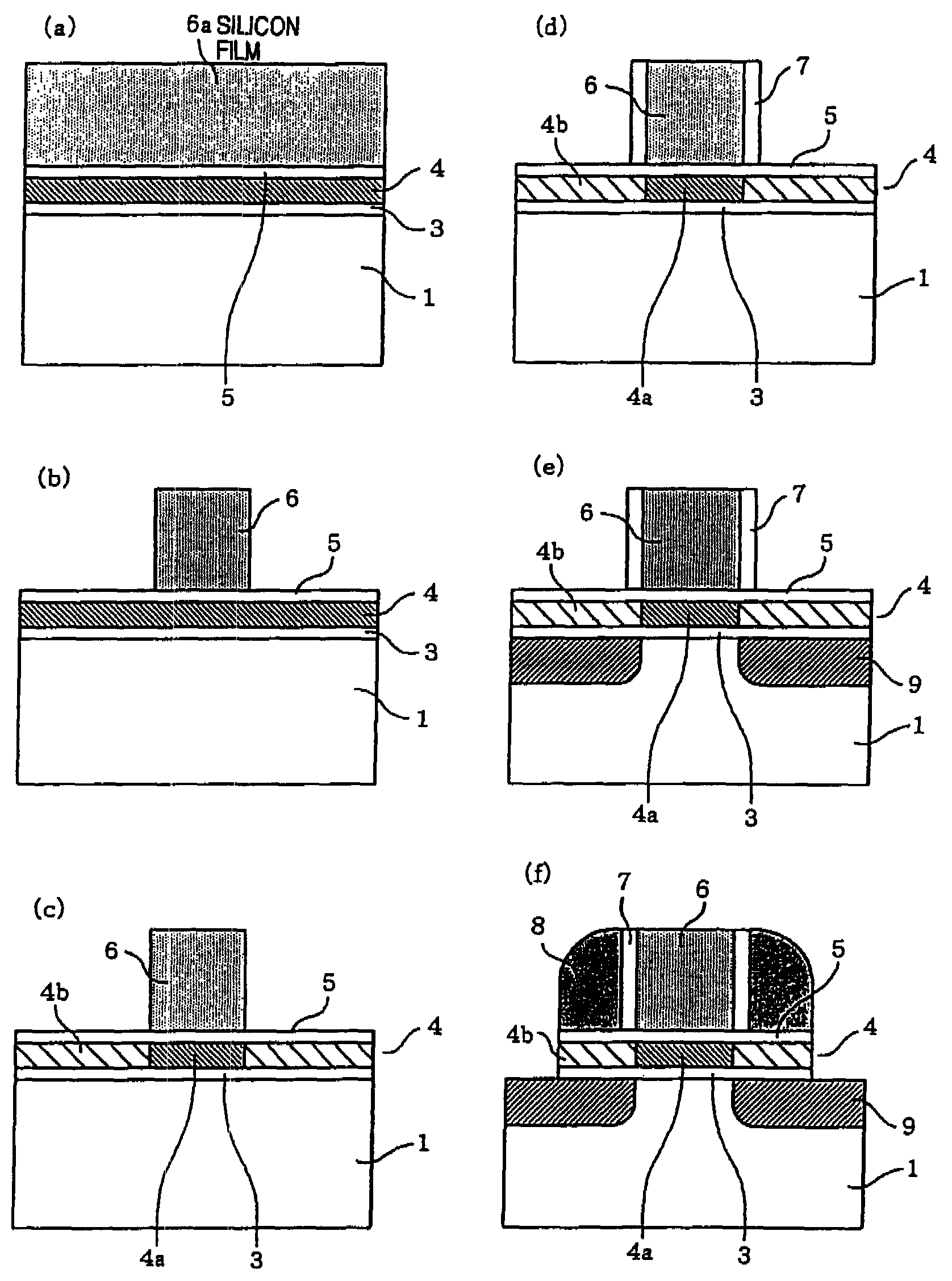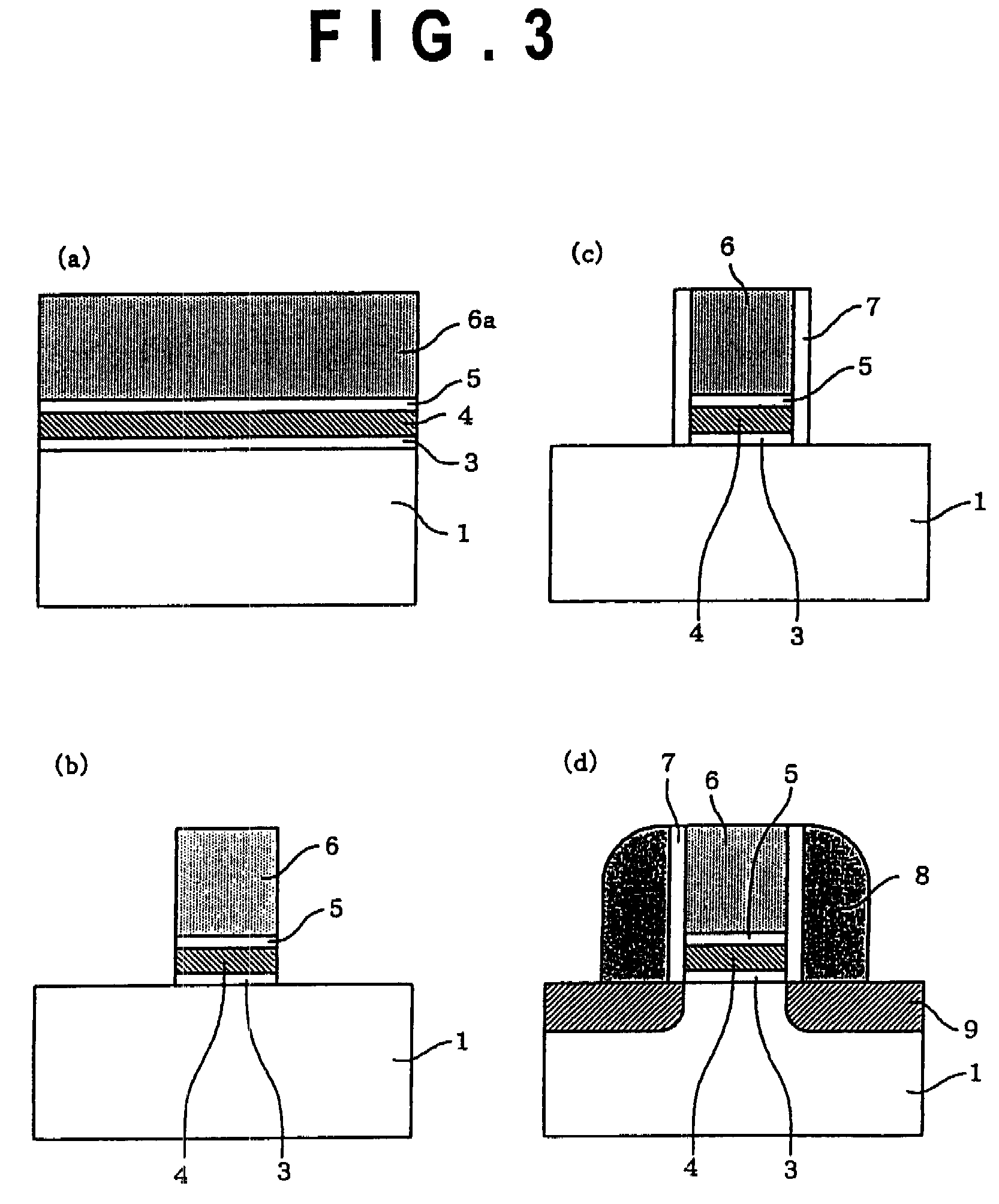Semiconductor device and method of producing the same including a charge accumulation layer with differing charge trap surface density
a technology of magnetic and insulating film, which is applied in the direction of solid-state devices, transistors, instruments, etc., can solve the problems of reducing the efficiency of writing the injected electrons, and increasing the writing time. , to achieve the effect of improving the writing and erasing properties, suppressing the dispersion thereof, and improving the retention property
- Summary
- Abstract
- Description
- Claims
- Application Information
AI Technical Summary
Benefits of technology
Problems solved by technology
Method used
Image
Examples
first exemplary embodiment
[0020]FIG. 9 is a top view of a trap memory according to the first exemplary embodiment of the present invention. FIGS. 10(a) and 10(b) are cross sections taken along lines A-A and B-B in FIG. 9. As illustrated in FIGS. 9 and 10, a plurality of element isolation insulating films 2 which segments an active region are formed in the surface region of a silicon substrate 1 so as to extend in the upper and the lower direction in FIG. 9. A laminate insulating film composed of a first gate insulating film 3, a charge accumulation layer 4 and a second gate insulating film 5 is formed over the silicon substrate 1. The predetermined number of gate conductors 6 are formed so as to be orthogonal to the active region (i.e. to be orthogonal to the element isolation insulating films 2) over the laminate insulating film. Gate side walls 7 are formed on both sides of the gate conductor 6. Side walls 8 are formed outside the gate side walls 7. An impurity diffusion layer 9 forming a source and a drai...
example 1
[0032]FIG. 14 is a top view of an example 1 of the present invention. FIGS. 15(a) and 15(b) are cross sections taken along lines A-A and B-B in FIG. 14. In FIGS. 14 and 15, the same portions as those in the first exemplary embodiment illustrated in FIGS. 9 and 10 are denoted by the same reference numerals as those in FIGS. 9 and 10 and the duplicated description thereof is omitted. In the present example, the portion of the charge accumulation layer 4 immediately under the gate conductor 6 is rendered the high trap surface-density region 4a, part of the outside portion of the gate conductor is rendered the low trap surface-density region 4b which is lower in trap surface-density than the high trap surface-density region 4a and the portion outside the part is rendered a non-trap region 4c which does not contain electric charge traps. The non-trap region 4c does not contain nitrogen and is almost completely converted to a silicon oxide film. In the memory cell of the example 1, electr...
example 2
[0033]FIG. 16 is a top view of an example 2 of the present invention. FIGS. 17(a) and 17(b) are cross sections taken along lines A-A and B-B in FIG. 16. In FIGS. 16 and 17, the same portions as those in the first exemplary embodiment illustrated in FIGS. 9 and 10 are denoted by the same reference numerals as those in FIGS. 9 and 10 and the duplicated description thereof is omitted. In the present example, the portion of the charge accumulation layer 4 immediately under the gate conductor 6 is rendered the high trap surface-density region 4a and the portion outside the end of the gate conductor is rendered the non-trap region 4c which does not contain electric charge traps. The non-trap region 4c outside the end of the gate conductor does not contain nitrogen and is almost completely converted to a silicon oxide film. In the memory cell of the example 2, electric charge traps do not exist at the portion outside the gate conductor. The charge accumulation layer 4 inside the gate condu...
PUM
 Login to View More
Login to View More Abstract
Description
Claims
Application Information
 Login to View More
Login to View More - R&D
- Intellectual Property
- Life Sciences
- Materials
- Tech Scout
- Unparalleled Data Quality
- Higher Quality Content
- 60% Fewer Hallucinations
Browse by: Latest US Patents, China's latest patents, Technical Efficacy Thesaurus, Application Domain, Technology Topic, Popular Technical Reports.
© 2025 PatSnap. All rights reserved.Legal|Privacy policy|Modern Slavery Act Transparency Statement|Sitemap|About US| Contact US: help@patsnap.com



